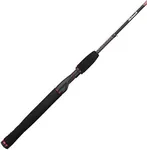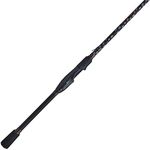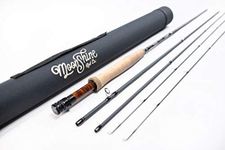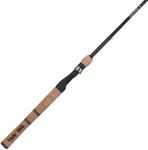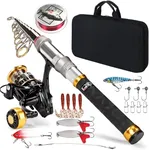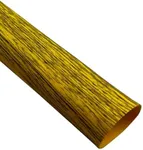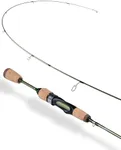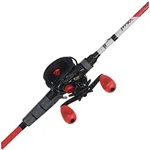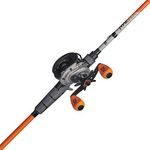Buying Guide for the Best Freshwater Fishing Rods
Choosing the right freshwater fishing rod can greatly enhance your fishing experience. The right rod will depend on the type of fish you're targeting, the fishing techniques you prefer, and your personal comfort. Understanding the key specifications of fishing rods will help you make an informed decision and ensure you have the best tool for your needs.Rod LengthRod length is the measurement from the tip to the butt of the rod. It affects casting distance, accuracy, and the types of fishing techniques you can use. Shorter rods (under 6 feet) are ideal for close-quarters fishing and offer better control, while longer rods (over 7 feet) provide greater casting distance and are better for open water. Choose a length based on where you'll be fishing and the type of fish you're targeting.
Rod PowerRod power refers to the rod's resistance to bending under load, often categorized as ultra-light, light, medium, medium-heavy, and heavy. Ultra-light and light rods are suitable for small fish and finesse techniques, while medium to heavy rods are better for larger fish and more aggressive techniques. Consider the size and strength of the fish you plan to catch when selecting rod power.
Rod ActionRod action describes how and where the rod bends when pressure is applied. Fast action rods bend mostly at the tip, providing quick hook sets and sensitivity, ideal for single-hook lures. Moderate action rods bend more towards the middle, offering a balance of sensitivity and casting distance, suitable for treble-hook lures. Slow action rods bend throughout the length, providing maximum casting distance and are good for light baits. Choose rod action based on your preferred fishing technique and lure type.
MaterialFishing rods are typically made from graphite, fiberglass, or a composite of both. Graphite rods are lightweight, sensitive, and offer better performance for detecting bites, making them ideal for experienced anglers. Fiberglass rods are more durable and flexible, suitable for beginners and rough conditions. Composite rods offer a balance of both materials. Consider your experience level and fishing conditions when choosing the material.
Handle TypeThe handle type affects comfort and control during fishing. Handles can be made from cork, EVA foam, or a combination of both. Cork handles are comfortable and provide a good grip, but can wear out over time. EVA foam handles are durable and easy to clean, offering a firm grip. Some rods have split grips for better balance and control. Choose a handle type that feels comfortable in your hand and suits your fishing style.
Line WeightLine weight indicates the range of line strengths that the rod is designed to handle. It is usually marked on the rod and helps ensure you use the appropriate line for optimal performance. Lighter line weights are suitable for smaller fish and finesse techniques, while heavier line weights are needed for larger fish and more aggressive techniques. Match the line weight to the type of fish you plan to catch and the fishing conditions.

